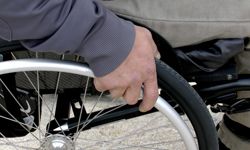
Imagine looking over your shoulder all the time in public spaces. Being afraid to log on to social media in fear of what you might find being said about you. Feeling forced to put security measures into your home. Abuse and harassment being a constant and expected part of your life. Your professional and personal reputation being repeatedly and unfairly smeared. Stepping away from a job you love or shunning career opportunities because of the risk they carry.
Shockingly, the scenario described is one that hundreds of women working in journalism and media experience to some degree during the course of their careers.
In milder situations, women might find themselves on the receiving end of personal comments about their appearance and their professional ability. In extreme examples, women are threatened with death or rape, subjected to long-term harassment campaigns and targeted by defamation and unjust threats of legal action.
Earlier this year, I conducted research for a project run jointly by non-profit organisation Women in Journalism (WiJ) and my employer, Reach Plc, to investigate the scale and impact of the problem in the UK.
The survey of more than 400 women working in journalism or media found that three-quarters had been subjected to some form of threat to their safety online in connection to their work.
The research also found a fifth of participants had been subjected to harassment, sustained abuse or stalking in connection to their work.
A quarter of respondents said they had experienced some kind of sexual harassment or sexual violence online during the course of their work and half said they had been subjected to misogyny online.
The research also found online abuse had caused almost half to reduce promotion of themselves and their work online and 20 percent of respondents had considered leaving the industry altogether.
The UK findings were reflective of another piece of research titled The Chilling, which was conducted by the International Center for Journalists (ICFJ) and published by UNESCO in 2021. The research, which surveyed more than 900 women journalists living in more than 125 different countries world-wide, found nearly three-quarters had experienced some kind of online violence. Death and rape threats, gaslighting and long-term harassment, connected violence offline and hacking, doxxing and spoofing were all listed as types of abuse experienced.
Intersectionality of abuse was significant, with black, indigenous, Jewish, Arab and lesbian respondents reporting both the highest rates and most severe impacts of online violence.
Both research sets demonstrated women make decisions based on avoidance of online harm – with victims choosing to change roles, reduce online visibility and, in extreme cases, leave the industry entirely. As one participant in my research said: “I very deliberately limited my use of social media for fear of abuse. I feel this is detrimental to my career as I see other journalists getting exposure, and promotion. But I don't think the risk to my mental and physical health is worth it.”
Alison Phillips, the editor of the Mirror and chair of Women in Journalism, says the chilling effect on women’s careers, stories and voices in online spaces is a dangerous threat to democracy and a diverse media ecosystem. Since publishing the research this year, WiJ has called for employers to take decisive action. It has also committed to signposting resources and support on its website as well as providing a series of practical workshops for women and managers in industry and it is currently drawing up a safety policy which can be used by member organisations.
Alison says: “Women have fought a long and hard battle to be seen and heard in journalism. We now have a new fight – against those who try to silence us with online abuse and ridicule. But we refuse to be silenced.”
The impact of online violence
Former BBC radio presenter Liz Green can testify to the impact online violence can have after being harassed over the course of a decade on email, Twitter and YouTube by DJ-turned social media personality Alex Belfield.
In September 2022, Belfield was handed a lifetime restraining order preventing him from making contact with, monitoring or referring to Liz and three of her former co-workers. He was also jailed for four-and-a-half years for stalking four other people working in media or entertainment.
The communications sent by Belfield included personal, lewd and misogynistic insults, making claims of bullying and denigrating Liz’s professionalism and abilities.
Liz says the abuse was relentless and that Belfield’s ceaseless and unwarranted scrutiny incited his legion of tens of thousands of online fans to follow suit.
She says the impact on her mental health was significant.
“It got to the point when I just could not take any more. It destroyed me completely, professionally and personally. Everything I did I knew he was scrutinising. I was frightened of just doing my job.
“I had become introverted, it affected my relationships with people I worked with because I was so anxious. I had bars on the windows of my home, I had CCTV and I never took the same route twice.”
Liz’s story is just one example of thousands of similar tales from women working in journalism and media.
Cristi Hegranes, the founder and CEO of Global Press, sees comparable examples from women working in bureaus around the world.
From Haiti to Cameroon, Mongolia to Democratic Republic of Congo, Global Press’ female-only workforce consists of women trained and supported to produce journalism reflective of their local communities.
Cristi recognises both the opportunities and risks of women telling the stories of their own people not only in English for a global audience through the Global Press Journal and syndication, but also within their communities in their own local languages.
Cristi says: “In societies when women are not in the primary power position, when you shift that lens and women become prominent and powerful in the field of journalism, people become very uncomfortable.”
Global Press structures its bureaus around an award-winning duty of care model which puts physical, digital, legal and psychological safety at the heart of its training and its daily routines to ensure all journalists are conducting their work with safety as the top priority.
“When you are covering the community where you live, where people have access to your physical person, we see online harassment trickle out in very physical ways. For example, a journalist writes a story and her family is denied a land-use permit, or X, Y, Z types of physical harassment start to play out. I think there is an extra step we need to take when journalists are living in the communities they are reporting,” says Cristi.
Strength in numbers
In the UK, Reach is leading the way in tackling the problem of online safety. In 2021, I was appointed as online safety editor and since then, I have set up systems, structures and policies to offer a joined-up approach to safety incorporating security, health and safety, HR, editorial, well-being, training and development and diversity and inclusion. Messaging and activity is supported by a network of trained online safety reps and in the event of an online backlash, a support swarm of peers within the organisation help colleagues by driving out nasty notifications online. In June, the work being done by Reach was highly commended at the Association of Online Publishers (AOP) Digital Publishing Awards.
Much of the work I do is collaborative – I have shared resources and advice with the National Council for the Training of Journalists (NCTJ), have fed into the government’s National Committee for the Safety of Journalists and have delivered training to student journalists across the UK.
This collegiate approach was the reason in 2022, Reach Plc became a member of the Coalition Against Online Violence (COAV). Founded in 2020 by International Women’s Media Foundation (IWMF), COAV was set up to unite the extensive work being done by experts in journalism, tech and human rights globally and to facilitate knowledge exchange and collaborative projects.
The coalition boasts members from Europe, the Global South and Australia and the US, including Global Press. As well as meeting once a month, it also conducts research and creates safety resources, training and response.
Nadine Hoffman, the deputy executive director of IWMF, says that while big tech should be taking much more responsibility, the fact remains that platforms put the safety of journalists at the bottom of the priority list. While COAV and its members can lobby for change in those spaces, it can also make a significant difference by facilitating knowledge exchange, mobilising research and projects and assisting members and women journalists more widely with the resources and support to take control of their own online spaces.
Nadine predicts the mental health impacts of online violence will only continue to rise and that this will be one of the greatest challenges for employers and journalists in the years to come. But while the hurdles continue to unfold at pace, solutions also continue to be established, such as the project led by ICFJ to create an early warning system to detect gendered online violence which has the potential to spill into real-world violence.
In societies across the globe where online violence continues to pose a threat to women working in journalism, the work being done often by female-led organisations to rise up and meet the tidal wave, offers some hope. The fact that industry is starting to seriously recognise the consequences of intersectional online harm against its workforce, offers some hope. The push to increase the numbers of women in leadership in industry and tech positions, offers some hope.
And what of Liz Green, whose life was almost destroyed by the campaign of hate conducted against her online?
Well, she still worries what will happen when Belfield is released, but she says in recent weeks, she has started to feel a chink of hope return to her life.
“I have to realise that I have a life to live. I will be careful and will continue to be so, but I refuse to allow some inadequate person to control my life through fear.
“It’s taken me a long time to get to this point where I am not living in total constant fear. I have felt happy for the first time in a long time.”
Resources
- The Chilling (research from the International Center for Journalists)
- Women in Journalism: Online Harms
- Global Press Journal
- Coalition Against Online Violence
- ACOS Alliance: Safety for freelance journalists
- Suzy Lamplugh Trust: National Stalking Helpline
This article was first published in InPublishing magazine. If you would like to be added to the free mailing list to receive the magazine, please register here.












